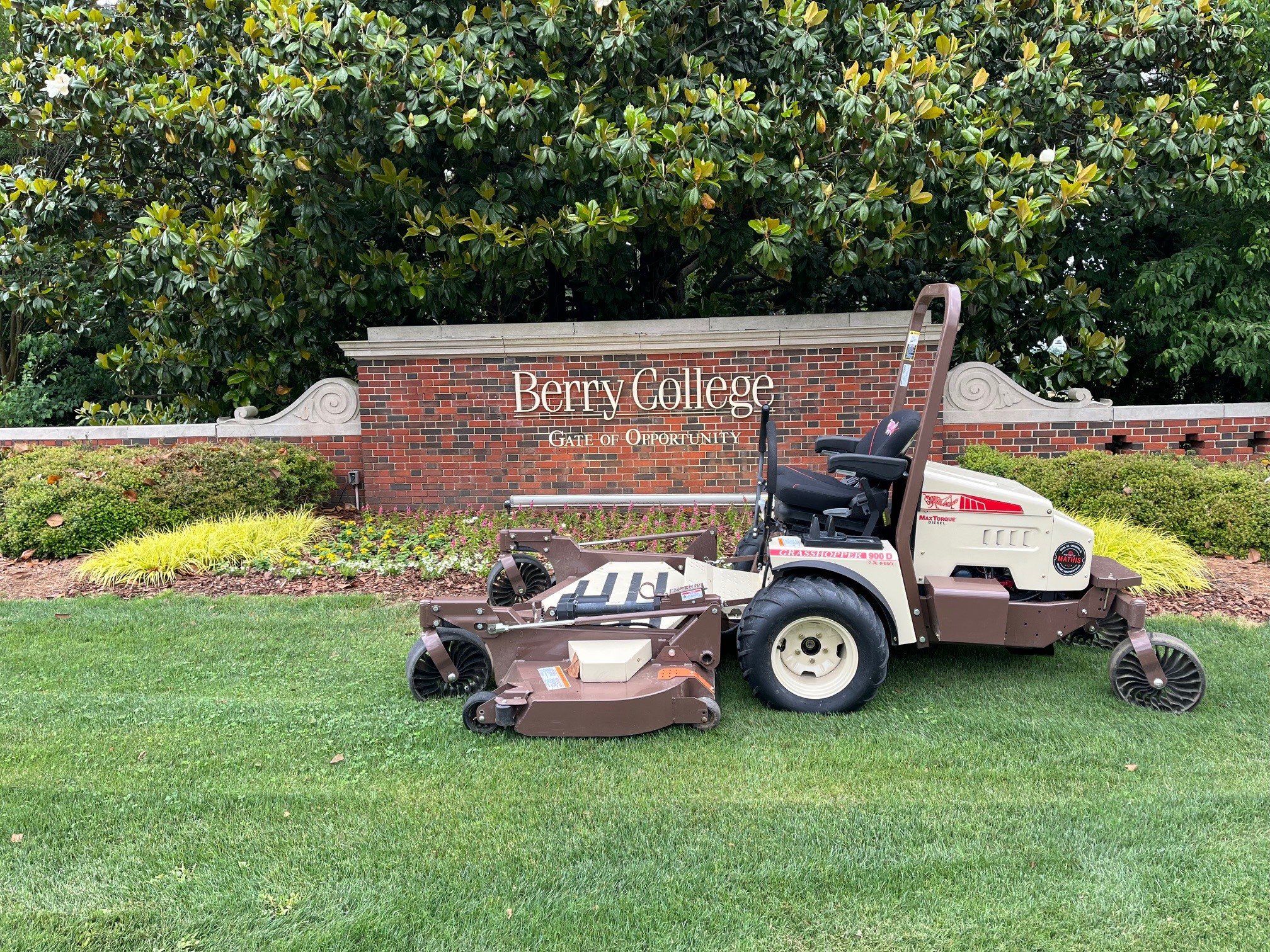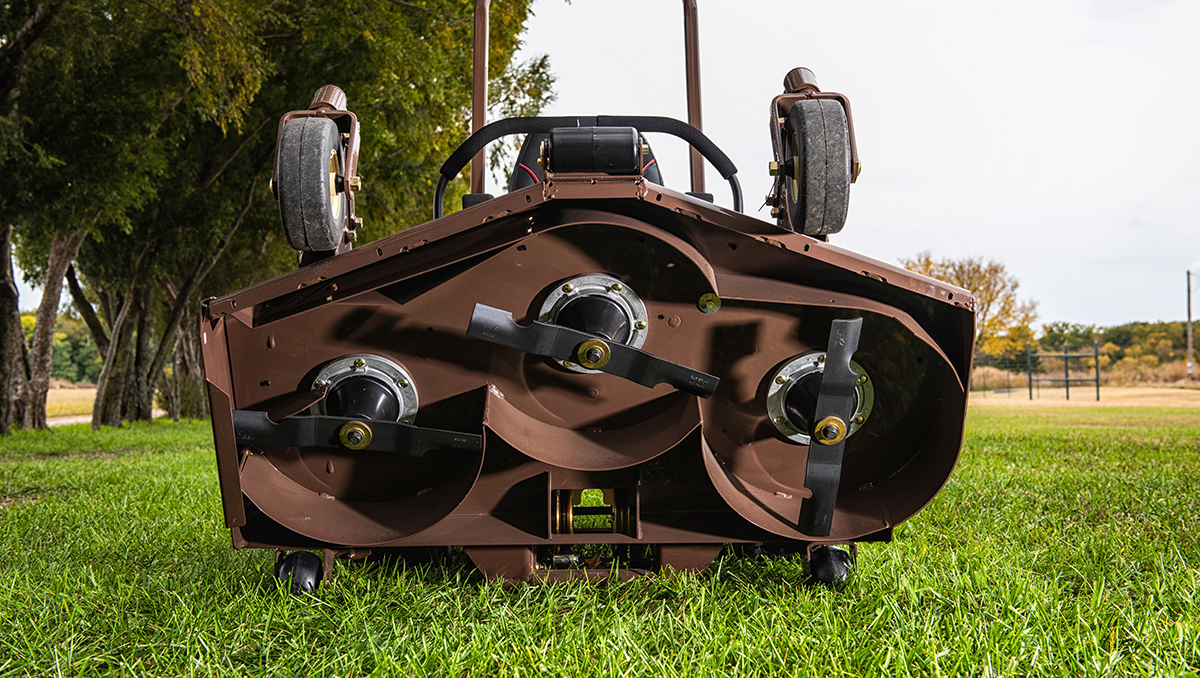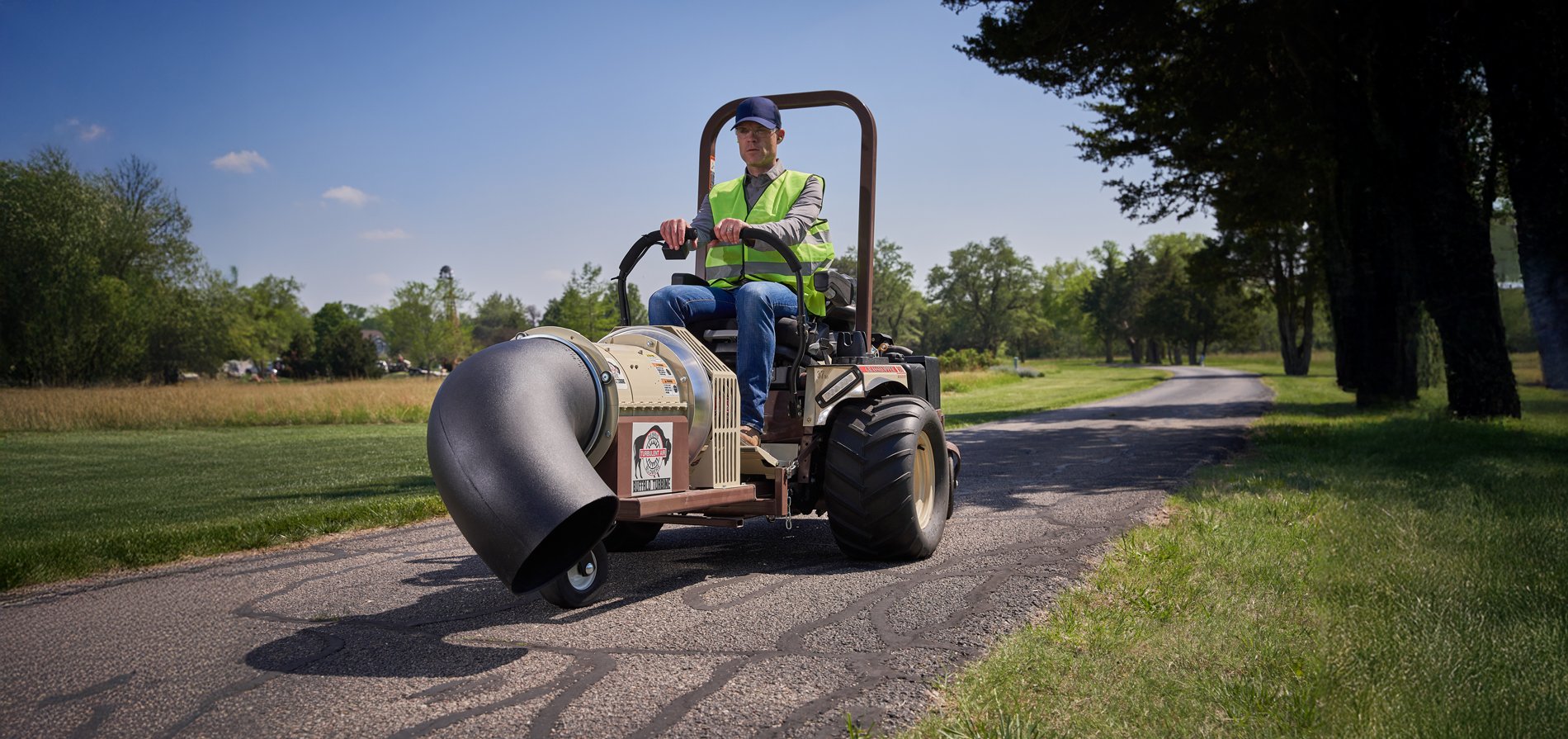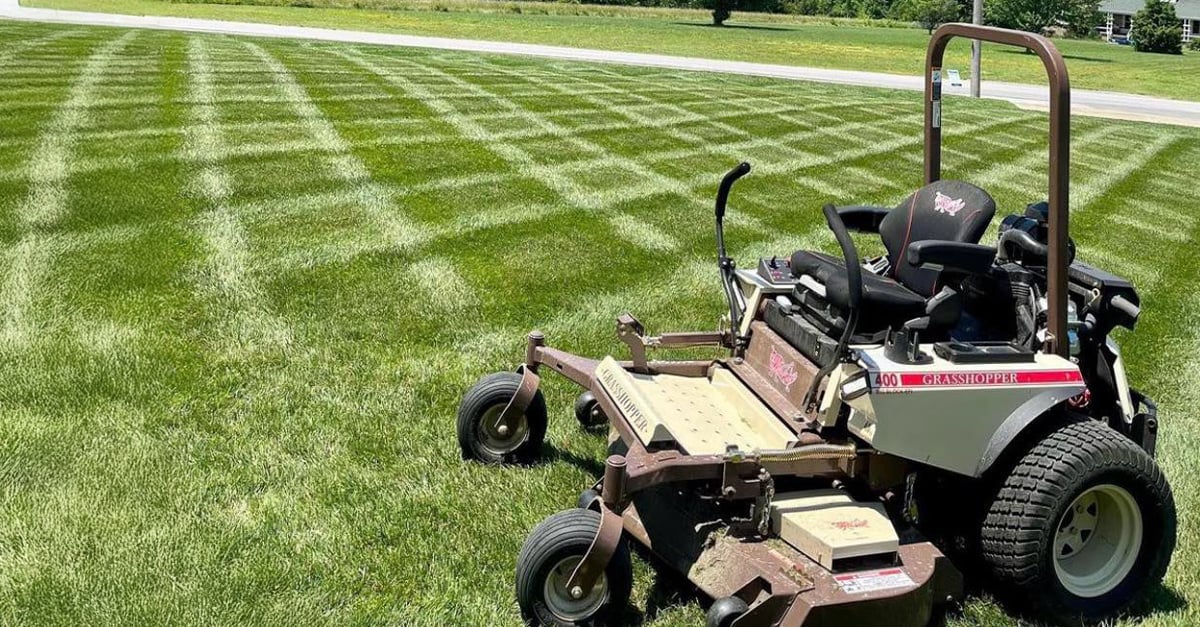Zero-turn mowers have revolutionized lawn mowing and what it means to be fast and agile around the yard. But pure speed isn’t how great mowing is measured. Great mowing is about delivering a great-looking cut as safely and efficiently as possible.
It’s generally accepted that the best speed for effective mowing is in the 3-6 mph range. Going too fast can actually result in an uneven cut. How? As the leading edge of the deck pushes the grass forward, the grass doesn’t have time to stand back up before being cut because the mower is moving so fast. Going too fast can also result in scuff marks where you slow the mower down and turn, especially if the ground is soft or damp. It’s essential to mow more slowly when the grass is really thick in order to give the deck a chance to process the clippings.
So as you can see, just because you have a fast and agile zero-turn mower doesn’t mean you have to jump in the seat and start racing around the lawn like Denny Hamlin or Lewis Hamilton. Instead, consider the following keys to professional-level mowing that take both your time and pride into consideration.
Proper Mowing Height
Removing too much grass during a single mowing is not advised. First, there is this concept known as the “1/3 Rule” which suggests that removing more than 1/3 of the grass blade at once is unhealthy for the grass. There are turfgrass experts who question this theory, so take it with a grain of salt. Regardless, taking off too much grass at once can negatively impact the final appearance of the lawn if the clippings are piling up everywhere. (Obviously this won’t be an issue if you are bagging the clippings.)
The really important aspect of maintaining a healthy lawn ties to grass length. Maintaining grass at a short length can impede root growth. Short grass can also dry out faster, and is more susceptible to weeds. Longer grass, on the other hand, helps shade the soil and root system which can help prevent weeds from germinating while the grass grows stronger. The following guidelines are fairly common for key grass types:
- Tall Fescue 4”
- Bluegrass 3.5”
- Ryegrass 2.5”
- St. Augustine 4”
- Zoysia 2.5”
- Bermuda 2.5”
So the next time you head out to mow, size up the grass before you even start the engine. If your lawn is really long, don’t be afraid to raise the deck a notch above the recommended height. A little bit longer is a lot better than too short.
Sharp Blades
Just like a knife, razor or other tool that’s designed to cut, a lawn mower blade must be kept sharp. Dull mower blades can damage grass blades, leading to a dull-looking lawn that’s more susceptible to stress and disease. Lawn maintenance professionals typically sharpen blades every couple of days, or every 8-12 hours of mowing. As a homeowner who takes pride in their lawn, why not follow that same kind of schedule? At the very least, blades should be sharpened every 25 hours or so.
If your blades are looking pretty beat-up with dents and gouges, get a hold of your dealer to buy some replacements. Speaking of your dealer, a good preseason maintenance tune-up typically involves blade sharpening or replacement. Depending on how many hours you mow each season, that preseason blade maintenance could be all it takes to keep you cutting cleanly from spring to fall.
Clean Deck
Too much accumulation of grass, dirt and other gunk under the deck can impede blade rotation and airflow, which can impact cutting performance. For every five or six hours you mow, check if any excessive buildup should be scraped away. Some companies make specific deck-scraping tools, but you could also use something like a putty knife, garden trowel or drywall scraper. A plastic ice scraper is also a great option since it won’t scratch paint.
If using a jack and jack stands to lift the mower off the ground and hold it in place, be sure to follow all of the jack manufacturer’s safety precautions. This would also be a good time to closely inspect the blades. If you are the proud owner of a Grasshopper FrontMount™ mower with PowerFold® technology, cleaning the deck is really easy because it can automatically tilt up with the mere press of a button.
Tire Pressure
One of the most overlooked aspects of cut quality is tire pressure. Tires that aren’t properly inflated can result in a bumpier ride and uneven cut. Refer to your mower manual’s tire pressure recommendations, and always check pressures before you mow. Ideally you have an air compressor or some kind of portable tire inflator in the garage to help make it easy to add a little air when necessary.
Mowing Pattern
The direction in which you mow is another factor to consider. If possible, it’s helpful to alternate between two or more mowing patterns. Doing so helps prevent ruts in the lawn, and also helps the grass stand back up straighter.
Cut-enhancing Mower Features
If all you want to do is go as fast as possible and shred everything in your path, there are mowers out there that can do that. But when you take pride in how your lawn looks, look for mower features that help provide a superior cut. For instance, Grasshopper’s DuraFlex™ Suspension Forks absorb impacts on rough terrain to help maintain a level cut.
You can also look for features that help improve mower efficiency. For instance, Grasshopper’s GrassMax™ blade system not only helps improve cut quality, but also allows the blades to get closer to the edge of the deck. That allows you to cut more grass with every pass, helping you save time without sacrificing the finished look of your lawn.





